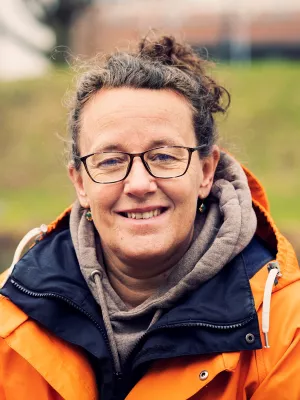
Johanna Alkan Olsson
Social environmental scientist

Uptake and use of biodiversity offsetting in urban planning – The case of Sweden
Author
Summary, in English
Globally, biodiversity offsetting is used to balance negative impacts on biodiversity and ecosystem services caused by exploitation. In Sweden, there is an increasing interest in biodiversity offsetting in urban planning. However, there is limited understanding about the use of the concept in a municipal context. This study aims to examine and critically reflect on the uptake and use of biodiversity offsetting at a strategic level in urban planning in Sweden. We study urban planning documents, and included Sweden's 290 municipalities in the study. The result shows that more than 50% of Sweden's municipalities mention biodiversity offsetting in their planning documents, targeting both regulatory offsetting of protected areas and voluntary offsetting of urban green space. The uptake is highest in urban areas experiencing high exploitation pressure, and many municipalities include both biodiversity and ecosystem services in their strategic work with offsetting. Most municipalities do not relate to the mitigation hierarchy (avoid, minimize, restore, offset), nor the goal of no net loss of biodiversity and ecosystem services. There is an ambiguity in the translation between losses and offsets, i.e. what type of offsetting (like-for-(un)like), what replacement ratios, and where to place the offsets. Few municipalities have developed processes, guidelines, strategic plans, etc., to integrate offsetting into the planning process. We conclude that the uptake of biodiversity offsetting is substantial, but with a fragmented, and often immature use in relation to ecological knowledge, and the planning process. We argue that, to develop biodiversity offsetting into an approach that delivers sound outcomes for nature and people in urban planning, municipalities must have a capacity in terms of organisational structures and resources.
Department/s
- Centre for Environmental and Climate Science (CEC)
- BECC: Biodiversity and Ecosystem services in a Changing Climate
- LU Profile Area: Nature-based future solutions
Publishing year
2023-02
Language
English
Publication/Series
Urban Forestry and Urban Greening
Volume
80
Document type
Journal article
Publisher
Elsevier
Topic
- Environmental Sciences
Keywords
- Biodiversity offsetting
- Governance
- Green space
- Nature
- Urban planning, ecosystem services
Status
Published
ISBN/ISSN/Other
- ISSN: 1618-8667